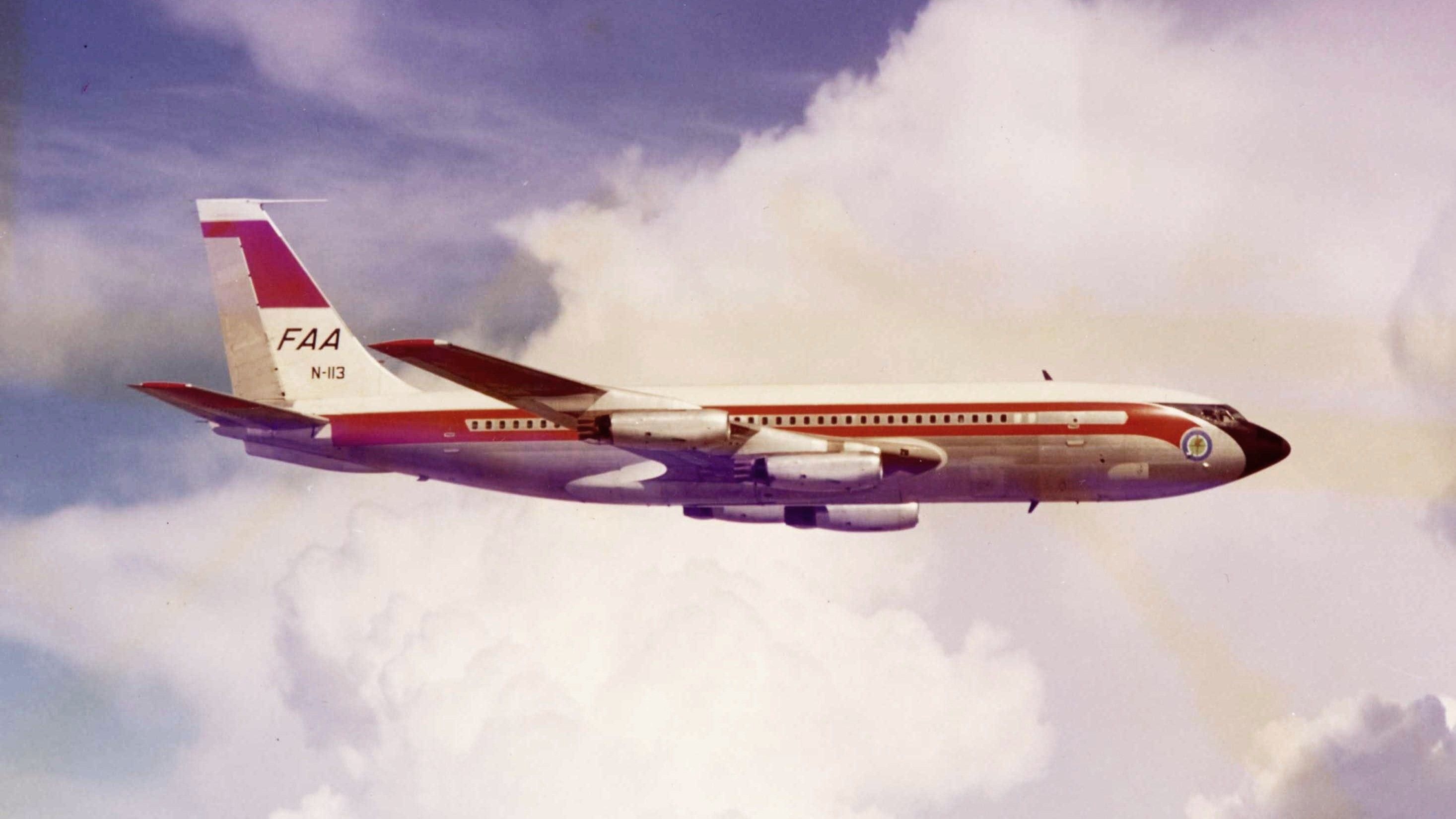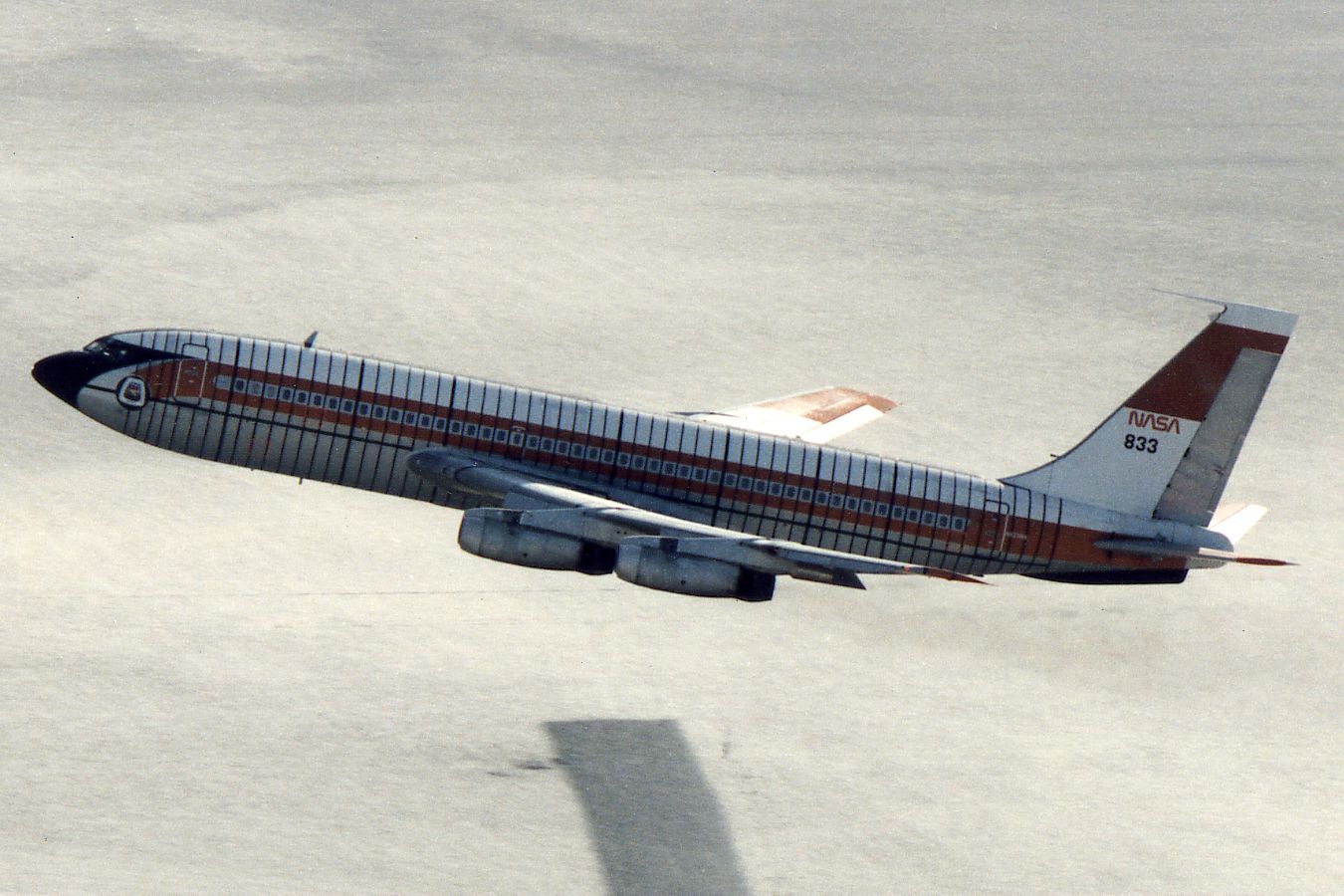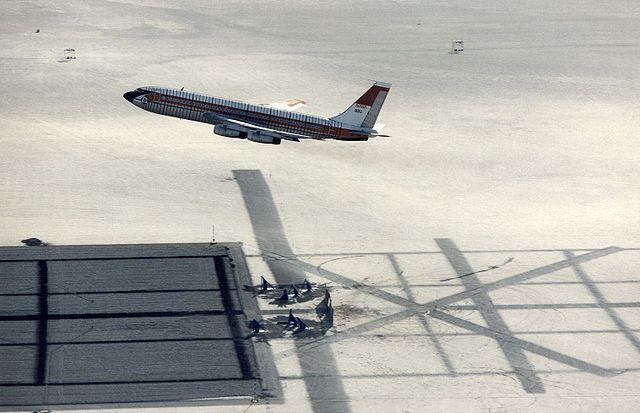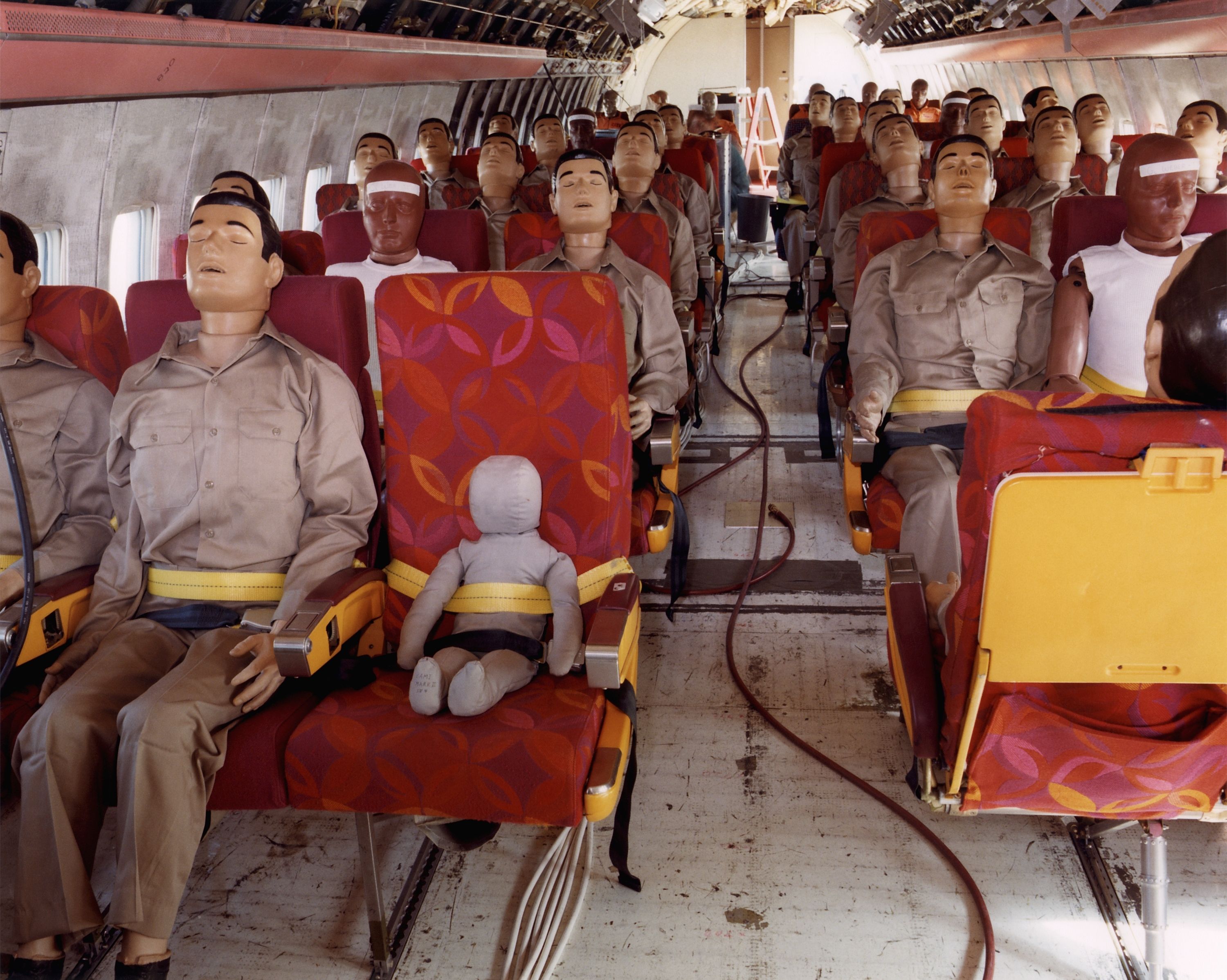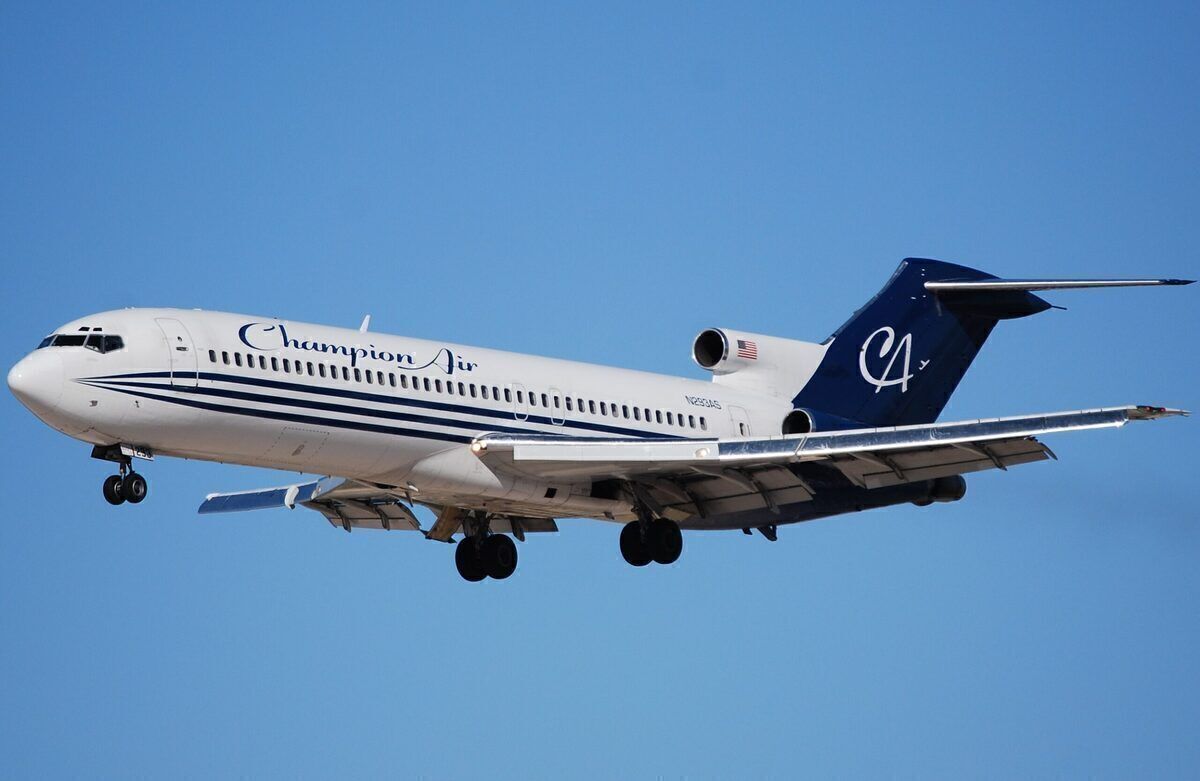Summary
- NASA and FAA crashed a Boeing 720 in the Mojave Desert to test anti-misting fuel additive in a real jetliner crash scenario.
- The experiment aimed to test the impression of fire after a crash.
- The experiment also highlighted the challenges of passenger survival in crash situations, findings leading to new safety rules.
In 1984, the National Aeronautics and Space Administration (NASA) Dryden Flight Research Center, together with the Federal Aviation Administration (FAA), deliberately crashed a remotely piloted Boeing 720 in the Mojave Desert. This was part of an experiment called the Controlled Impact Demonstration to test how an anti-misting fuel additive could help suppress fire in a real jetliner crash scenario.
The aircraft used in the test
The organizations spent over four years planning for the test flight and crash. The aircraft used for the experiment was a 23-year-old Boeing 720, registration N833NA. According to ATDA.aero, it took its first flight in May 1961 and was first delivered to the FAA for training purposes. After racking up over 20,000 flight hours across 54,000 cycles, the aircraft had come to the end of its useful life. NASA obtained it from the FAA in 1981 for the experiment.
The Boeing 720 was a derivative of the 707 and was developed to serve shorter routes from shorter runways. It is the only aircraft that did not follow Boeing's 7X7 naming strategy. The 720 was equipped with four Pratt & Whitney JT3C-7 engines.
The United Kingdom's Imperial Chemical Industries (ICI) developed the anti-misting fuel additive to be mixed with jet fuel. Called "FM-9", the molecular-weight long-chain polymer had already demonstrated its ability to inhibit fires in simulated laboratory tests. When combined with jet fuel, FM-9 produces anti-misting kerosene (AMK). However, it also came with particular challenges.
Love aviation history? Discover more of our stories here
Ensuring suitable AMK degradation
Indeed, the problem was that the AMK had to be reduced to almost jet fuel before being burnt by the plane's engines, as it could clog filters. This process is called "degradation" and was accomplished on the Boeing 720 using a device they called a "degrader."
Each of the aircraft's four engines had a degrader built by General Electric that could break down the AMK to near Jet-A quality. In addition to the AMK research, NASA Langley Research Center was involved in a structural loads experiment that involved dummies. The test also sought to determine if passengers could survive the crash.
Before the crash flight took place, 14 other flights were done with 69 remote control approaches. The flights were used to test how the engines behaved after the fuel had passed through the degraders and see how the plane acted while being flown as a drone. The initial test flight was scheduled for late 1983 but had to be postponed following problems with flying the plane remotely.
The aircraft's final mission
The test eventually took place on December 1, 1984, with the aircraft taking off from Edwards Air Force Base in California. It carried 76,000 lb (34,473 kg) of the modified Jet-A fuel, and all engines ran smoothly throughout the test flight. The Boeing 720 could seat between 131 and 137 passengers in a standard two-class configuration, but as you would guess, no passengers were onboard that day. Instead, instrumented dummies occupied the seats in the cabin.
The flight plan required the aircraft to touch down with its landing gear retracted on a specially prepared runway on the east side of the dry lake bed. It had to be directly on the centerline with its wings level to keep the fuselage intact and to allow the eight strategically positioned steel posts to slice through the wings.
Flown remotely by NASA research pilot Fitzhugh Fulton, the plane climbed through 2,300 feet before descending on a 3.8-degree glideslope towards the runway. Reaching the decision height of 150 feet above the ground, the Boeing 720 was slightly to the right, but the remote pilot managed to bring it back to the center line.
As the qudjet neared the ground, its left wing dropped and contacted the lakebed first before reaching the wing cutters, causing the aircraft to swing left and skid on the ground at an angle of about 45 degrees. One wing cutter struck the inboard engine on the right wing, causing a massive fire. The fire spread as the right wing broke off and folded over the fuselage. It was fully extinguished over an hour later.
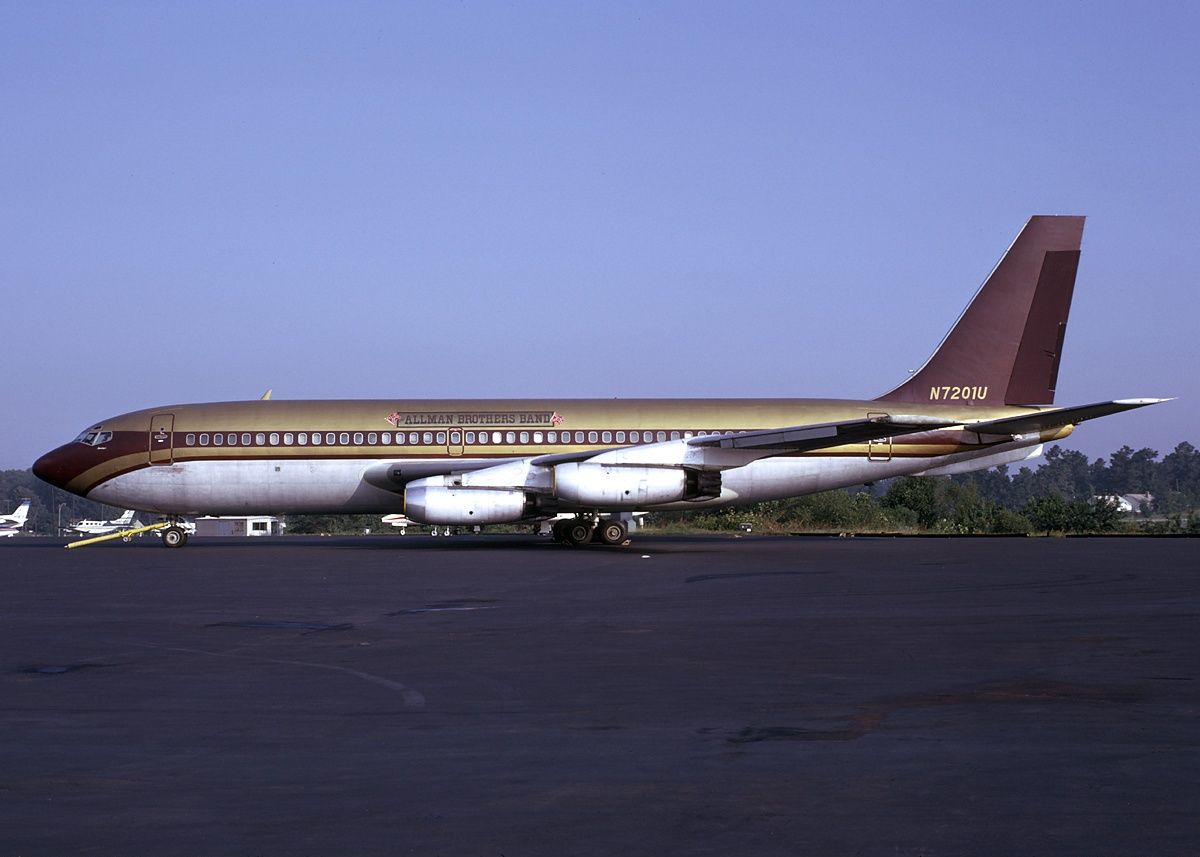
What Happened To The Led Zeppelin Boeing 720? "The Starship"
Looking at the history of the legendary band's jet.The crash test's findings
Rather than proving the effectiveness of the anti-misting additive in preventing a fire, it proved insufficient, as evident from the fireball in the pictures. However, it was credited with reducing the intensity of the resulting fire, although it still took over an hour to put out. In its tests, the FAA estimated that of the 113 people on the plane, around 25% would have survived the crash.
Accounting for the time it would take to open the aircraft doors and deploy the slides, the FAA estimated that it would take around 15 seconds to get out of the front cabin and 33 from the rear section. The FAA also considered it highly speculative that people could have escaped through the dense smoke. The Controlled Impact Demonstration marked the end of the FAA's attempts to order airlines to use the anti-misting additive. The reality was its effectiveness was different in a real crash scenario.
The aircraft was also used for various impact-survivability experiments, including new seat designs, flight data recorders, galley and stowage-bin attachments, cabin fireproof materials, and burn-resistant windows, which were tested in real-world conditions. The results helped the FAA develop new rules regarding fire prevention and fire-retardant materials.
A similar experiment
As it happens, NASA and the FAA's Controlled Impact Demonstration is not the only time that an aircraft has been deliberately crashed as part of an experiment. In April 2012, a Boeing 727 was crashed in Mexico as part of research into a real-life crash simulation. Similarly, it had dummies onboard and was fitted with several cameras and other scientific instruments.
The aircraft crashed into the desert with spectacular results. The experiment was carried out as part of a TV investigation to study passengers' survival chances in different parts of the aircraft. It also assessed the suitability of the brace position. The trijet, registration XB-MNP, was nearly 35 years old at the time and had been in service with various operators, including Singapore Airlines, Alaska Airlines, and Champion Air.
Did you know about the Controlled Impact Demonstration? Do you think such experiments are good for improving aviation safety? Please share your thoughts in the comments.

